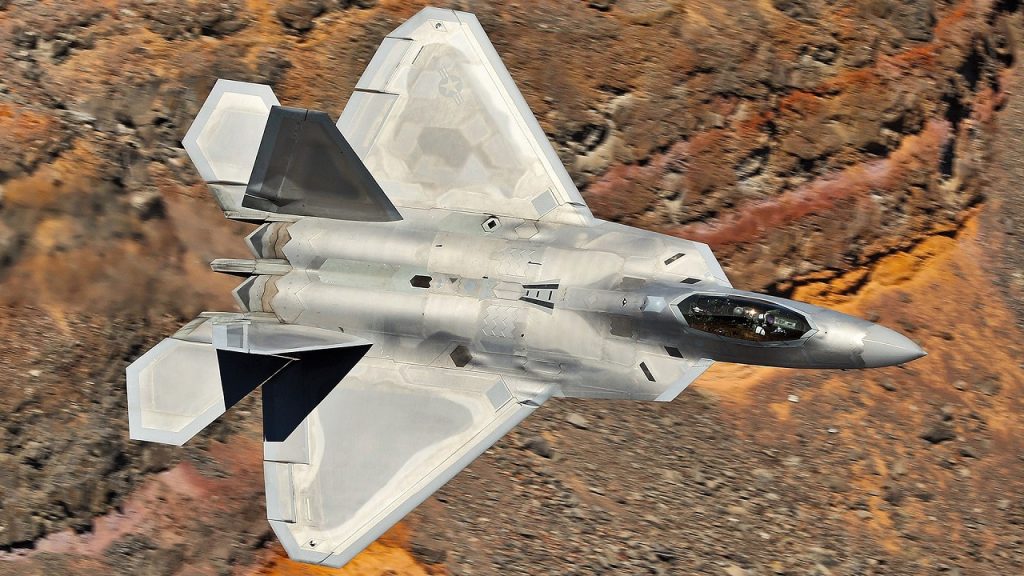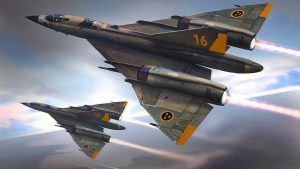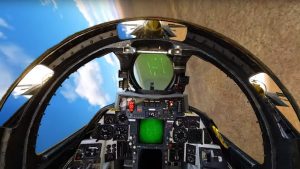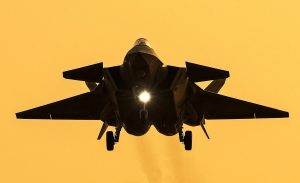Trump’s supposed endorsement of selling F-22s to Israel was merely for show. Don’t hold your breath waiting for Israel to buy the plane.

F-22 Raptor. Image Credit: Creative Commons.
Israel has expressed interest in purchasing the Lockheed Martin F-22 Raptor, but their chances are slim. Israel receives the largest share of the United States military aid budget. Around $11 billion in military aid was doled out by the United States in 2020, with $3.3 billion going to Israel. Afghanistan, a country the United States occupied for two decades, was one of just two other countries to receive more than $1 billion.
While Israel has benefited from U.S. military aid, that was not always the case. The United States made efforts in the early 1960s to restrict the influx of foreign armaments into the Middle East.
But U.S. policy towards Israel shifted drastically following the Six-Day War. Several Arab countries had allied themselves with the Soviet Union, as seen by their involvement in the conflict. Washington wanted to counteract Soviet influence in the Middle East; therefore, it strategically decided to provide Israel with a qualitative military advantage in the region by strengthening its armed forces. The United States began providing Israel with “the good stuff” in 1968 when it sold the country F-4 Phantom II fighter jets. Since then, the two countries’ military ties have grown closer, with the United States continuing to export cutting-edge weaponry to Israel. These days, the connection is so integral to U.S. foreign policy that calls for a reduction in aid to Israel is tantamount to blasphemy and would be politically disastrous for the United States.
Explaining the F-22’s Difficult Market
Given this, it may seem odd that the United States has never sold the F-22 Raptor to Israel, arguably the best fighter jet in the world. Yet, then-President Trump reportedly sanctioned the 2020 sale of F-22s to Israel. Now it appears that the jets will never be delivered.
For Israel to have a military advantage in the region, Trump approved the sale of F-22s. In principle, Israel would require a few F-22s to keep ahead if the United States were to fulfil its agreement to supply the United Arab Emirates with the Lockheed Martin F-35 Lightning II. Nevertheless, issues are preventing the sale from going through at this time. One, it’s against the law. Congress passed a law in 1998 prohibiting the export of F-22 fighter jets.
“The F-22, unlike the bulk of U.S. military aircraft, was never intended to be sold. “It was full of secret technologies and made using methods the U.S. government would like to keep under wraps,” Alex Hollings explained for Sandboxx. Particularly worrisome to the United States is the possibility that China or Russia will acquire F-22 knowledge. China, particularly Beijing, has engaged in industrial espionage to learn more about U.S. aerospace research and development. With illegally obtaining secret information from the United States, China created the J-20, their most advanced fighter.
Exporting the F-22 to Israel requires the approval of the U.S. Congress. With the sway that AIPAC has with both Republicans and Democrats in Congress, this kind of legislation has a good chance of becoming law. have an even greater challenge, however, because no country can produce the plane.
The United States only has a small fleet of F-22s in service. According to Hollings’s estimate, only around 130 of the 186 F-22s Lockheed constructed were ever operational, and the current number of combat-ready F-22s is likely in the double digits. Since it’s highly unlikely that the United States Air Force would release any current F-22s to fulfil an Israeli contract, new F-22s would have to be built to close the deal.
But creating the combatants takes a lot of work. In 2009, F-22 assembly lines went dark.
Hollings argued that developing a new and superior aircraft would be cheaper than restarting the F-22 production line. It wouldn’t be as easy as opening up the plants that had previously made Raptors because “Lockheed Martin used most of the F-22’s production infrastructure to make the F-35.”
In 2017, the government released a secret study to Congress that broke down the price of restarting F-22 production. “It would cost $50 billion to buy 194 additional F-22s at an estimated cost of $206 million to $216 million per aircraft,” the officials stated, citing the report’s findings. One reason for the high price tag is that Lockheed would be developing a brand-new design for the fighter, replacing the outdated one that has been in use since the 1990s.
“The Air Force has no plans to restart the F-22 production line; it wouldn’t make economic or operational sense to do so,” Air Force spokeswoman Capt. Emily Grabowski said in a 2017 statement.
Donald Trump’s acceptance of the F-22 deal was purely for show. Toss off any hopes of Israel ever getting the F-22.






